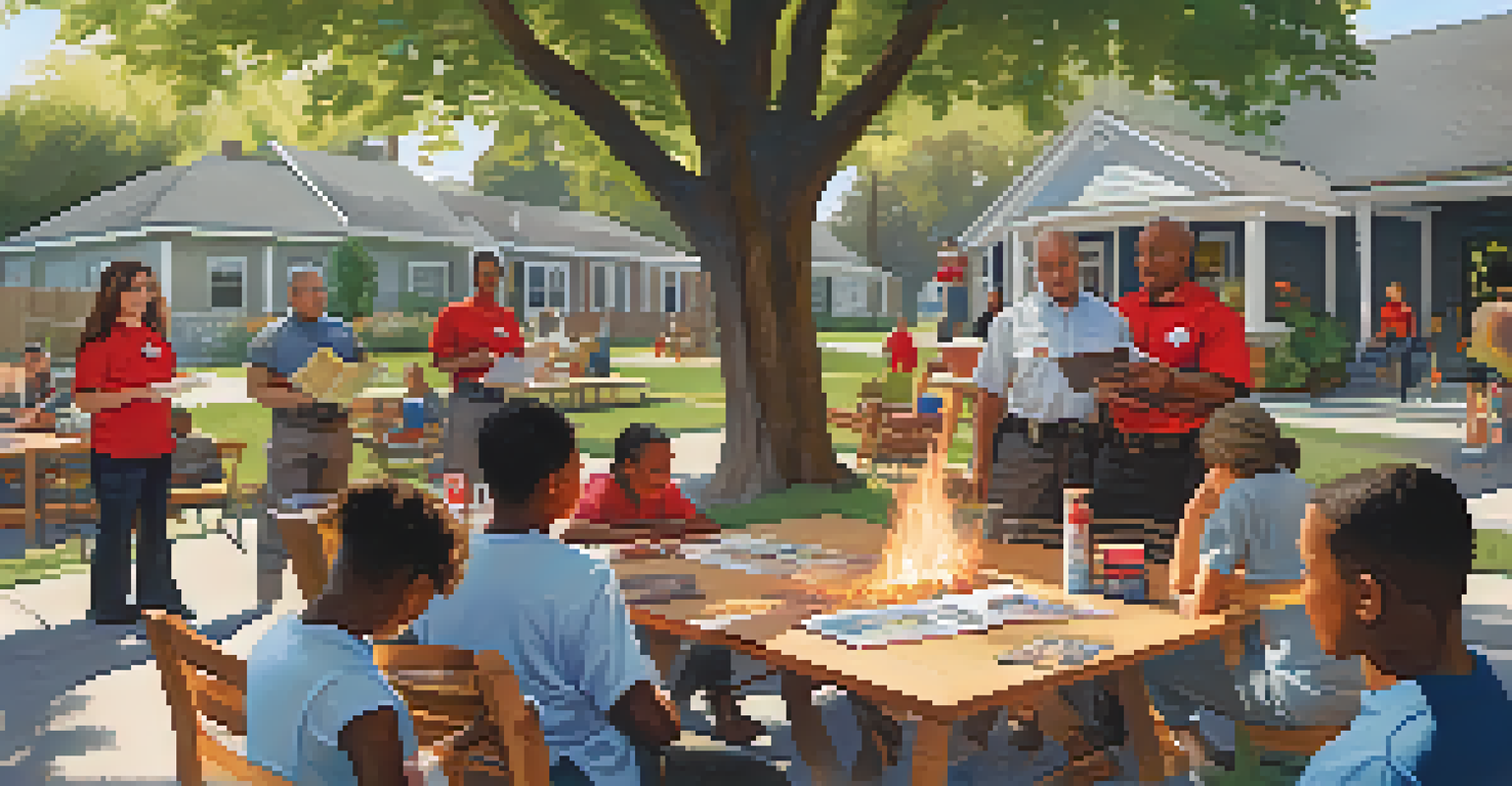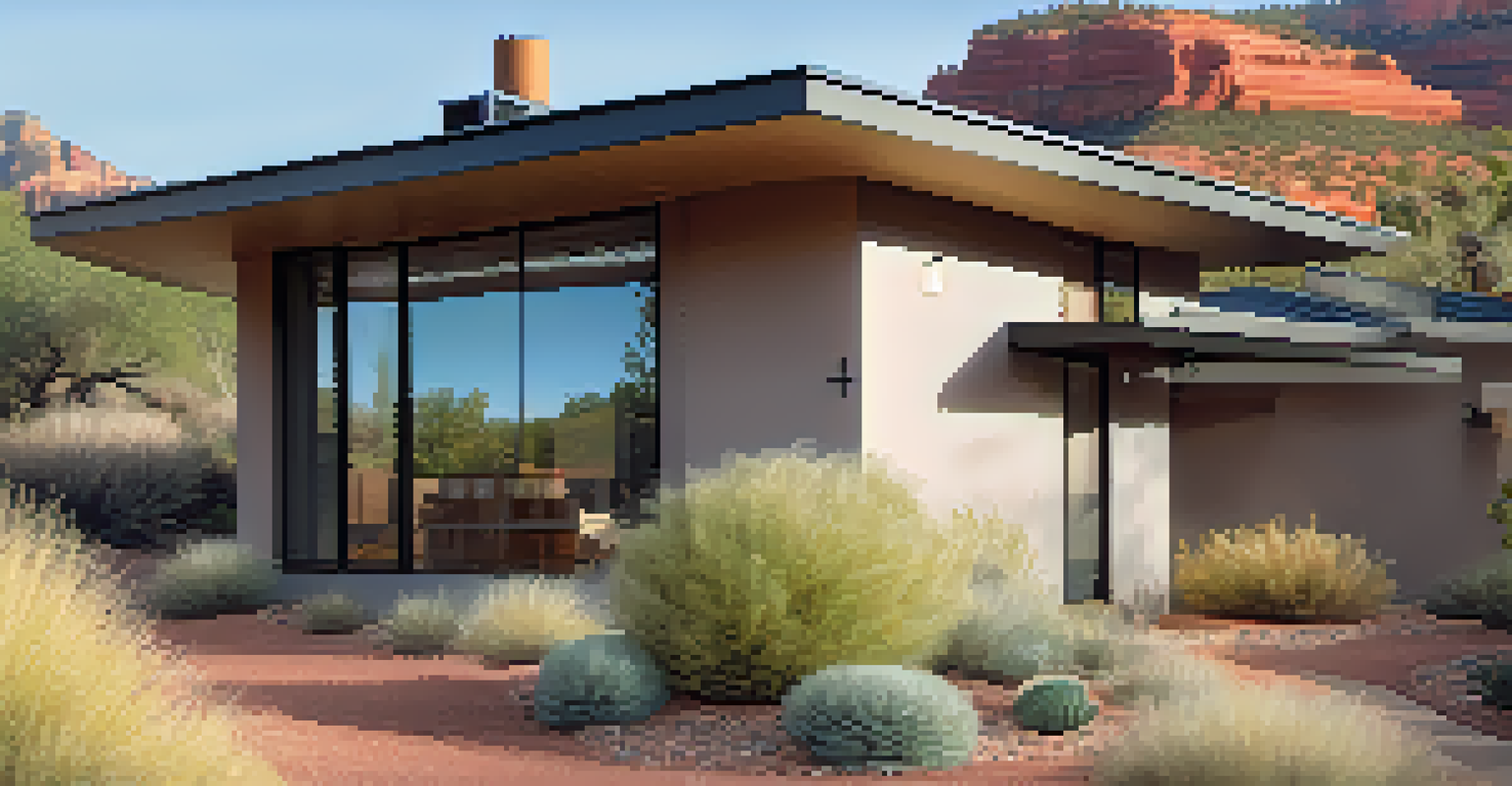Wildfire Risks in Sedona: Prevention and Community Actions

Understanding the Wildfire Risks in Sedona's Environment
Sedona is renowned for its stunning red rock formations and vibrant landscapes, but this beauty comes with a hidden danger: wildfires. The region's dry climate, coupled with high temperatures, creates a perfect storm for wildfires to ignite and spread. Additionally, the presence of dense vegetation and pine forests can contribute to the intensity and speed at which a fire can grow.
Wildfires are a reminder that nature is powerful and unpredictable; we must respect it and prepare accordingly.
In recent years, Sedona has experienced an increase in wildfire incidents, prompting local authorities to take a closer look at the factors involved. Climate change plays a significant role, as rising temperatures and shifting precipitation patterns can lead to drier conditions. Understanding these risks is the first step in preventing potential disasters and protecting the community.
Furthermore, human activity often exacerbates wildfire risks. Whether through campfires left unattended, discarded cigarettes, or even sparks from vehicles, it's essential for residents and visitors to be conscious of their actions. Awareness of these risks can lead to proactive measures that safeguard Sedona's natural beauty.
The Importance of Community Awareness and Education
Community awareness is crucial in mitigating wildfire risks. Educating residents about fire safety practices and the potential dangers of wildfires can significantly reduce incidents. Local organizations, schools, and fire departments can work together to host workshops and distribute materials that inform the public about how to prepare for fire season.

For instance, residents can learn to create defensible spaces around their homes by clearing away flammable materials and maintaining a healthy landscape. These simple actions can make a big difference in preventing fires from spreading to residential areas. Encouraging neighbors to participate in community clean-up events can also foster a sense of unity and shared responsibility.
Wildfire Risks in Sedona
Sedona's dry climate and dense vegetation significantly contribute to wildfire risks, necessitating increased awareness and preventive measures.
Moreover, leveraging social media platforms to spread awareness can enhance community engagement. Sharing tips, updates on fire conditions, and emergency procedures can keep everyone informed and prepared. When the community is educated and united, the chances of successfully preventing wildfires increase.
Effective Fire Prevention Strategies for Homeowners
Homeowners play a pivotal role in wildfire prevention. One of the most effective strategies is to create defensible space around properties. This involves clearing brush, dead leaves, and other potential fire fuels within a designated zone around the home, typically 30 to 100 feet. This buffer can help slow down the spread of fire and protect structures.
Preparedness is the key to survival; it's not just about having a plan, but about practicing it until it becomes second nature.
Additionally, using fire-resistant building materials can greatly enhance a home's resilience against wildfires. Options such as metal roofs, stucco siding, and tempered glass windows can withstand high temperatures better than traditional materials. Homeowners are encouraged to consider these upgrades when building or renovating their properties.
Regular maintenance is also key. Homeowners should inspect their properties for potential fire hazards and address them promptly. By taking these proactive steps, residents can significantly reduce the risk of wildfires affecting their homes and communities.
The Role of Local Government in Fire Management
Local government plays an essential role in managing wildfire risks through various strategies and initiatives. One of their primary responsibilities is to conduct controlled burns, also known as prescribed fires. These controlled fires reduce excess vegetation, thereby decreasing the amount of fuel available for wildfires.
Moreover, local authorities implement fire bans during high-risk periods, helping to prevent new fires from igniting. They also collaborate with state and federal agencies to develop comprehensive fire management plans that outline prevention, response, and recovery strategies. This coordinated approach ensures that resources are allocated efficiently during wildfire incidents.
Community Involvement in Prevention
Engaging the community through education and collaborative efforts can greatly enhance wildfire prevention and preparedness.
Public awareness campaigns are another vital function of local government. By disseminating information about fire safety, evacuation plans, and emergency services, officials can keep residents informed and prepared for potential wildfire threats. An informed community is better equipped to respond effectively during emergencies.
Community Firefighting Resources and Support
In Sedona, community members have access to various firefighting resources and support systems. The local fire department plays an active role in fire prevention and response efforts, offering training programs for residents interested in becoming volunteer firefighters or fire safety advocates. This not only builds skills but also fosters a sense of community involvement.
Additionally, Sedona's Firewise Communities program encourages neighborhoods to collaborate on fire prevention efforts. By working together, residents can identify risks, share resources, and implement safety measures that protect their homes and families. This program emphasizes the importance of collective action in reducing wildfire risks.
Support networks, such as local nonprofit organizations, also provide resources for residents. These groups often organize workshops, distribute educational materials, and offer assistance in creating defensible spaces. By utilizing these community resources, residents can take proactive steps towards wildfire prevention.
Emergency Preparedness Plans for Residents
Being prepared for a wildfire is essential for all residents of Sedona. Developing an emergency plan that includes evacuation routes, communication strategies, and essential supplies is a critical step in safeguarding lives. Families should ensure that everyone is aware of the plan and practice it regularly, so no one is caught off guard during an emergency.
Moreover, having an emergency kit ready to go can make a significant difference. This kit should include essential items such as water, non-perishable food, flashlights, batteries, and first aid supplies. Keeping this kit in an easily accessible location ensures that families can evacuate quickly if needed.
Emergency Preparedness Essentials
Developing an emergency plan and maintaining an accessible emergency kit are crucial steps for residents to safeguard themselves against wildfires.
Staying informed about fire conditions is also vital. Residents should monitor local news, weather reports, and official alerts from fire departments. By staying aware of potential threats, residents can make informed decisions and take action promptly when needed.
Building Resilience Through Community Engagement
Community engagement is key to building resilience against wildfire risks in Sedona. By fostering strong relationships among residents, local organizations, and government agencies, everyone can work together to create a safer environment. Collaborative events, such as community meetings and fire safety fairs, can promote dialogue and gather valuable input from residents.
These gatherings can also serve as platforms for sharing resources, success stories, and best practices in fire prevention. When individuals come together to support one another, it creates a sense of shared responsibility that strengthens the community as a whole. This united front is crucial when facing the challenges posed by wildfires.

Furthermore, engaging with local schools can raise awareness among younger generations. By incorporating fire safety education into school curricula and hosting interactive workshops, children can learn the importance of prevention and preparedness from an early age. This not only instills valuable knowledge but also empowers them to share that information with their families.